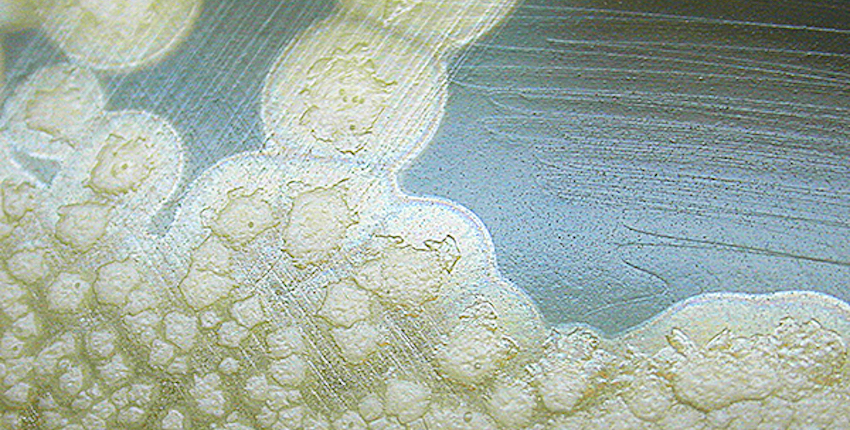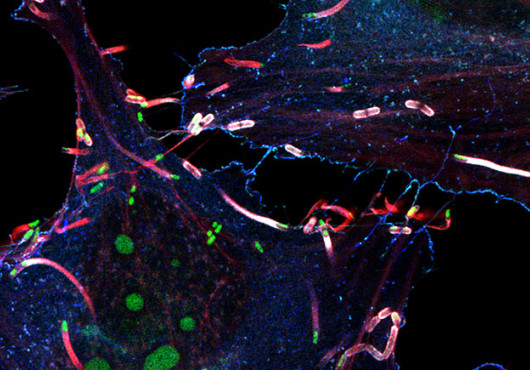
Botulism is a rare, potentially fatal, paralyzing illness. It’s the reason we shouldn’t feed infants honey and need to take care in consuming home-canned foods: They can contain nerve-damaging toxins produced by Clostridium botulinum. Botulinum toxin is classified as one of the six most dangerous potential bioterrorism agents.
There are seven known types of botulinum toxin made by various C. botulinum strains. Toxins A and B were identified in 1919 and later purified; both are currently used for spasticity, chronic pain, overactive bladder, removing wrinkles and other medical applications. Toxins C, D, E and F were discovered later. The last, toxin G, was identified in 1969 in soil bacteria in Argentina.
In 2013, a group in California found what seemed like a new toxin, type H, but it proved to be a false alarm. When the protein was eventually sequenced, it was found to be a combination of two existing toxins: a subtype of toxin F with a piece of toxin A.
And that’s where things stood—until now.
“For a long time, no new toxins have been found,” said Min Dong, Harvard Medical School assistant professor of surgery at Boston Children’s Hospital.
Last week in Nature Communications, Dong and colleagues reported the first new botulinum toxin to be found in close to 50 years. Provisionally called toxin X, it has some unusual properties that set it apart from the others.
“Sequence-wise it doesn’t look like any other toxin, and it cannot be recognized by antibodies to any other known botulinum toxin,” said Dong.
Becoming aware of the previously unknown botulinum toxin allows doctors and researchers to better defend against botulism, since each toxin requires a separate antibody to neutralize it.
Reopening a cold case
The bacteria that produce toxin X had been isolated in the 1990s in Japan. The strain, which had caused cases of infant botulism, was duly categorized, and its toxicity was attributed to toxin B. The bacterium was sequenced, and the sequence encoding toxin B was found.
That seemed to be the end of the story. “It was set aside,” said Dong.
In 2015, another Japanese group sequenced the bacterium’s genome and put the sequence in a public database.
“What they missed within this genomic sequence was a piece that contains this new toxin gene,” said Dong.
Pål Stenmark at Stockholm University in Sweden first noticed this in a bioinformatics analysis. The new gene bore all the characteristics of encoding a functional toxin.
Dong’s lab had been collaborating with Stenmark’s on the structure and function of botulinum toxins for “a long time,” said Dong. Stenmark approached Dong with the finding, and “we decided to join forces and categorize the toxin functionally.”
With Sicai Zhang, HMS research fellow in surgery in the Dong lab, leading the work, the researchers validated the toxin’s activity by assembling it artificially.
“We decided to avoid generating the full-length active toxin gene, as introducing a toxin gene into an organism or cellular system is always a significant biosafety concern,” said Dong. “Instead, we developed an approach to generate a limited amount of toxin in test tubes by joining two nontoxic fragments.”
This approach provided all the elements needed to understand how toxin X works. Jie Zhang, a senior scientist in Dong’s lab, was able to show that it causes paralysis in mice, similar to other botulinum toxins.
Therapeutic applications?
The surprises did not stop there. In further studies, Sicai Zhang found that botulinum toxin X cleaves the same set of nerve proteins targeted by other botulinum toxins—but it also cleaves a group of proteins that none of the other toxins touch.
“Type X has this unique capability to cleave VAMP4, VAMP5 and Ykt6,” said Dong. “Some of these proteins are poorly characterized, so type X toxin will be a valuable tool for defining their functions.”
The additional targets could potentially endow toxin X with different properties when used medically. Botulinum toxins A and B work by cutting proteins in nerve endings that affect the secretion of neurotransmitters, in turn affecting neuron communication. The effects of cutting the additional proteins has yet to be explored.
“Can this new toxin add additional therapeutic benefit? This is an exciting question that we don’t have the answer to right now,” said Dong. “We also still don’t know the potency of this toxin. That needs to be studied as well by a CDC-approved lab.”
To Dong, the process of discovery is as compelling as the results.
“Traditionally, you discover bacterial virulence factors by looking at infection consequences and finding the proteins and the genes,” he said. “In this case, the toxin was discovered by whole-genome sequencing of the bacteria. This illustrates the importance of genetics and bioinformatics approaches for understanding the microbial world.”
This study was supported in part by the National Institutes of Health (grant R01NS080833), the Swedish Research Council (2014-5667), the Wenner-Gren Foundation and the Swedish Cancer Society. Dong also holds the Investigator in the Pathogenesis of Infectious Disease award from the Burroughs Wellcome Fund.
Adapted from a post on Vector, the Boston Children’s clinical and research innovation blog.





